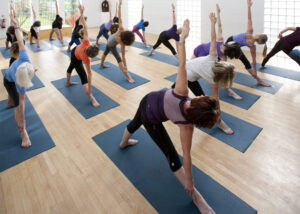What is Bhastrika Pranayama
Bhastrika Pranayama is a breathing technique known to produce heat in the body. It is beneficial for people with Kapha body composition or water-dominated. Bhastrika is a kind of pranayama that seems like Kapalbhati. However, they differ from each other in two fundamental ways. “Kapalbhati is essentially a breathing technique that mimics sneezing and involves the stomach. Bhastrika, on the other hand, is done through the chest and engages the lungs. Here, unlike Kapalbhati, both inhalation and exhalation are forced. It is similar to the post running panting,” Yogacharya Anoop, Chaitanya Foundation.
Bhastrika Pranayama or “Breath of Fire” refers to a tool called a bellow. This tool is what blacksmiths used to use to keep the fire brimming. It consists of two handles that, when you press together, gushes the air out of it through a nozzle, and when you open the handles, it sucks the air into the bag. This mechanism, in essence, is what we do with our lungs. When we breathe in with an inhalation, the air fills our lungs, and we deflate the lungs as we exhale. Bhastrika Pranayama involves forced fast, deep breathwork. We work our chest like the bellows to get quick inhalations and exhalations in a powerful, synchronized way.
Bhastrika Pranayama Benefits
Bhastrika Pranayama benefits various parts of the body and mind. It is said to:
- Supports the respiratory system by keeping the air passage clean from toxins and blockages.
- It helps to increase blood circulation in the body.
- It helps to clean the detoxify the blood.
- Maintains a clear nasal passage which can get blocked from dust and allergic reactions.
- It helps to lessen the fat in the body.
- The breathing technique boosts your immunity.
- Breathing helps to reduce anxiety and stress.
- Promotes deep awareness and increases focus
- It increases memory retention and keeps the mind clear.
- Breathing reduces gastric movements and enables you to digest better.
Bhastrika Pranayama Precautions
It is crucial to remember several precautions while training in Bhastrika Breathing, a few of which include:
- Avoid the breathwork if you suffer from internal organ tissues such as the stomach, spleen, intestines, or kidneys.
- Anyone with heart-related problems should not do this exercise.
- Anyone with hypertension or blood pressure ailments should not do this exercise.
- If you have ulcers anywhere in the body, avoid this breathwork.
Steps to perform Bhastrika Pranayama
Next, we will see how to do Bhastrika Pranayam:
- Sit nicely in the Padmasana or Sukhasana position and close your eyes.
- Roll the shoulders back and make sure your spine is well-lifted.
- Take some deep, steady breaths, allowing the abdomen to expand as you take in an inhalation.
- When you are ready, start the exhalation by contracting the abdominal muscles swiftly and forcefully.
- Follow it with a quick inhalation, letting the abdominal muscles loosen entirely.







